Have a project to do?
Fill out the form and a member from our sales team will get back to you
The article describes common mistakes startups navigating product development for the first time often make when outsourcing hardware development.
Outsourcing hardware development is a common practice. Startups often turn to it when they need to scale quickly, lack in-house engineering expertise, or want to cut costs. It’s especially tempting in the early stages when the team is small, timelines are tight, and there’s no in-house talent for electronics, mechanics, or manufacturing.
But this is where many problems begin. Outsourcing is a complex, multi-layered process. A single mistake along the way can become very expensive.
At EnCata, we’ve worked with US and European startups for over seven years, and we've seen the same pitfalls repeat over and over. In this article, we address the real questions startup founders face: “Should I outsource my hardware startup development?” “How do I protect IP when outsourcing product design?” “How do I find a reliable hardware design partner?” “What causes most hardware outsourcing failures?”
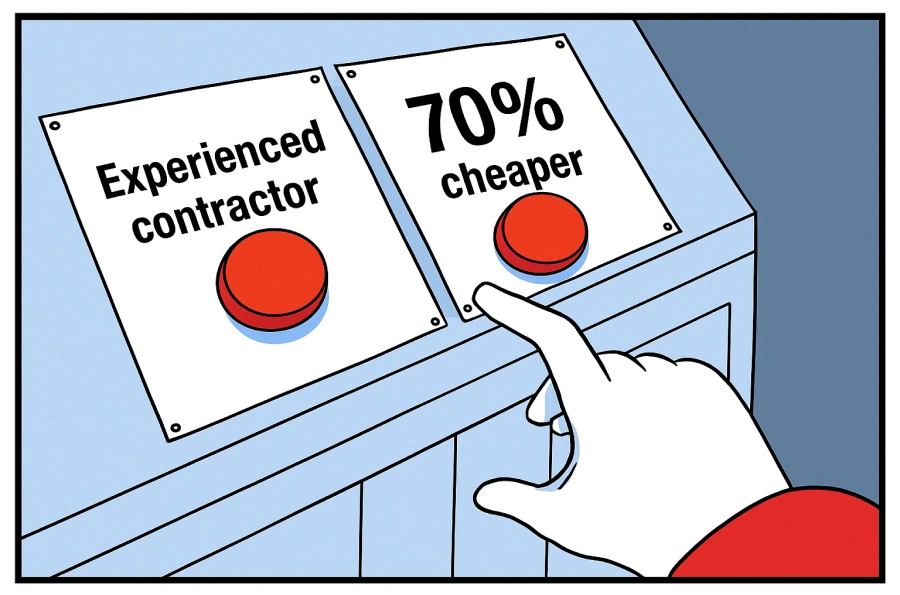
At first glance, a higher project quote may seem like a money grab. But in reality, the rate often reflects the engineer’s experience and the complexity of the problems they’re equipped to solve.
Here’s a question: what’s the real cost of hiring an engineer with 10–15 years of experience in non-standard electronics or advanced mechatronic systems? These are the people who identify bottlenecks at the concept stage, propose viable trade-offs, and avoid costly mistakes in implementation. Their rate will be higher, and for good reason.
Trying to keep costs down is reasonable, but when price becomes the only selection criterion, results usually suffer. Low-budget providers rarely offer enough technical depth. And when a vendor’s margin is too thin, they start cutting corners: skipping critical checks, reducing design rigor, or delivering sloppy work.
We’ve seen projects where extreme cost-cutting led to poorly routed PCBs, unreliable component mounting, inaccurate enclosure tolerances, or improper soldering techniques. Everything technically “worked” until assembly or testing revealed failures. This is common when working with vendors competing on price, without strong technical oversight.
And the “savings”? Often an illusion. Startups end up paying for staff travel to oversee production, video conferencing licenses, unplanned revisions, back-and-forth sample shipping, and customs fees. These hidden costs often cancel out the initial savings.
How to avoid it: Don’t treat cost in isolation. Think of it as part of the value equation: price vs. experience vs. engagement. Ask for previous case studies, confirm who will actually be working on your project, and demand stage-by-stage checkpoints.
If your project starts to drift or results don't meet expectations, consider a third-party technical audit. A fresh, objective review of your schematics, layout, or code can help you assess what’s salvageable and what needs rework. Sometimes it’s better to start over with a clean, purpose-driven design than to patch up a flawed implementation.
Many failed projects start with the phrase, “We talked it through.” Unfortunately, hardware doesn’t tolerate vagueness. If you didn’t specify operating conditions, expect certification issues. Forgot to document connector types? Prepare for incompatibility. Even “minor” details like surface finish can be critical, affecting everything from cleanability (in medical devices) to dust accumulation or flow behavior (in tubes and channels).
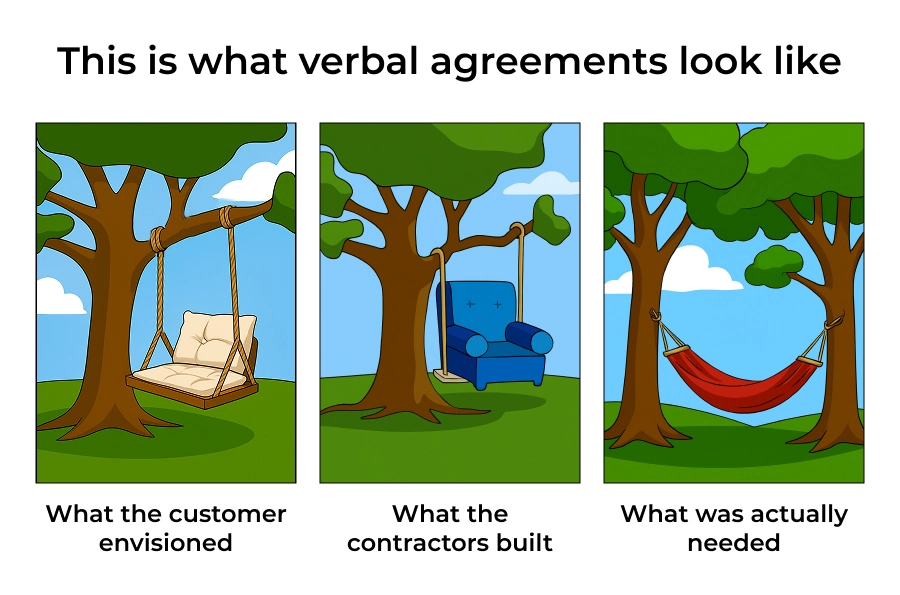
How to avoid it: Put everything in writing. Use requirements tables, annotated screenshots, diagrams. If you don’t have an engineer on the team to formalize specs, that’s no excuse. Even basic AI tools like ChatGPT can help you draft structured inputs and ask the right questions. For example, you can prompt: "List design requirements for a waterproof IoT enclosure for outdoor use, including materials, mounting, protection standards, and dimensions."
This gives you a strong starting point to refine with your contractor and engineers.
That said, AI is just a tool, not a substitute for real engineering judgment. If your vendor needs ChatGPT to understand your draft spec, it’s a red flag. It likely means they can’t professionally interpret the requirements.
If you're mid-project with a weak spec: Run a retrospective and identify what's missing. Update the documentation, align on technical decisions, and lock in the revised inputs.
If your budget is tight, prioritize the gaps that affect safety (e.g., water ingress, thermal failure) and system compatibility. Push non-critical updates to a later iteration.
AI tools can also help you create checklists, risk matrices, or draft updates based on prior work or similar projects.
At EnCata, we always ask customers to fill out a detailed questionnaire, even for simple tasks. It locks in environment parameters, size constraints, materials, test methods, and usage scenarios early on, minimizing surprises later.
An NDA is a start, but it’s not enough. You need a contract that clearly defines:
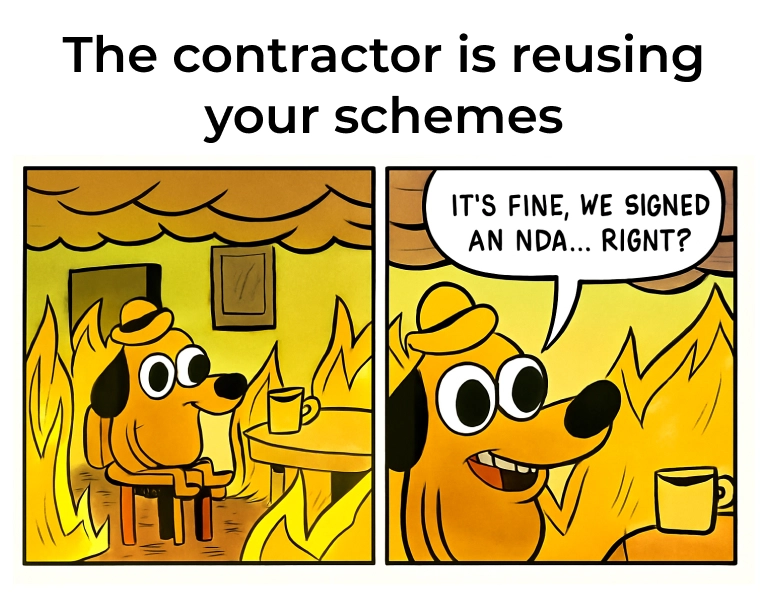
At EnCata, we document every IP handover, including intermediate versions. Each phase is signed off by both sides. This gives customers legal clarity and full access to their assets at any time.
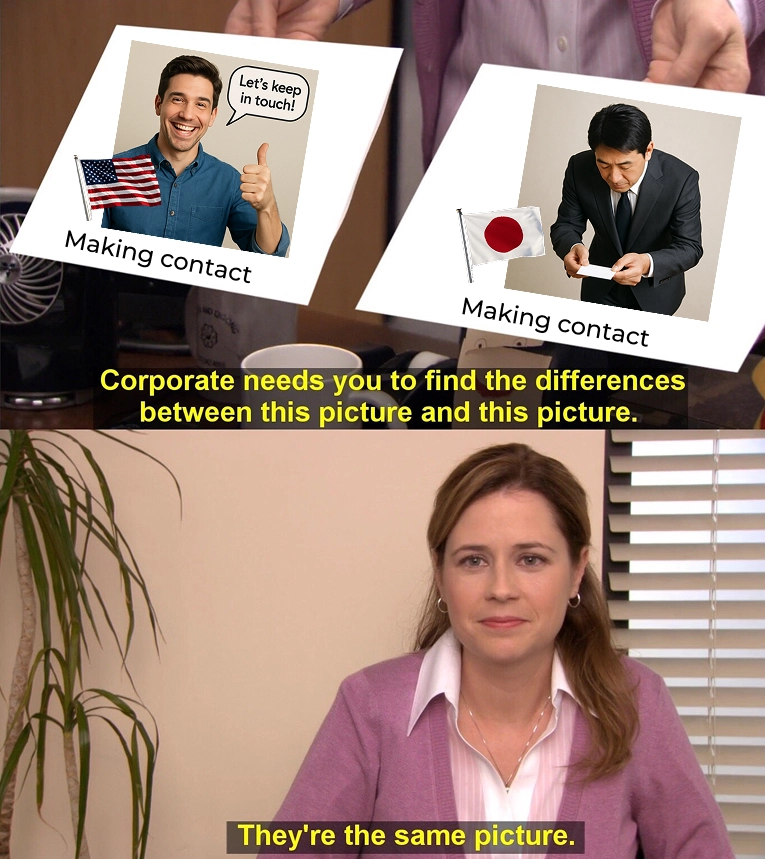
Clear specs and regular meetings aren’t enough. In global projects, a lot gets lost not in translation but in interpretation.
One of the biggest gaps lies in high-context vs. low-context cultures:
How to avoid it: Study your vendor’s cultural norms. Even a basic understanding, like knowing that Japanese teams avoid confrontation, or that Indian teams may say “yes” out of politeness, helps avoid misread signals.
Never rely on verbal agreements alone. Use written summaries, shared task boards, visuals, and templates. Encourage short, frequent syncs. Ask your team to paraphrase tasks to confirm alignment. These aren’t bureaucratic, they’re safeguards.
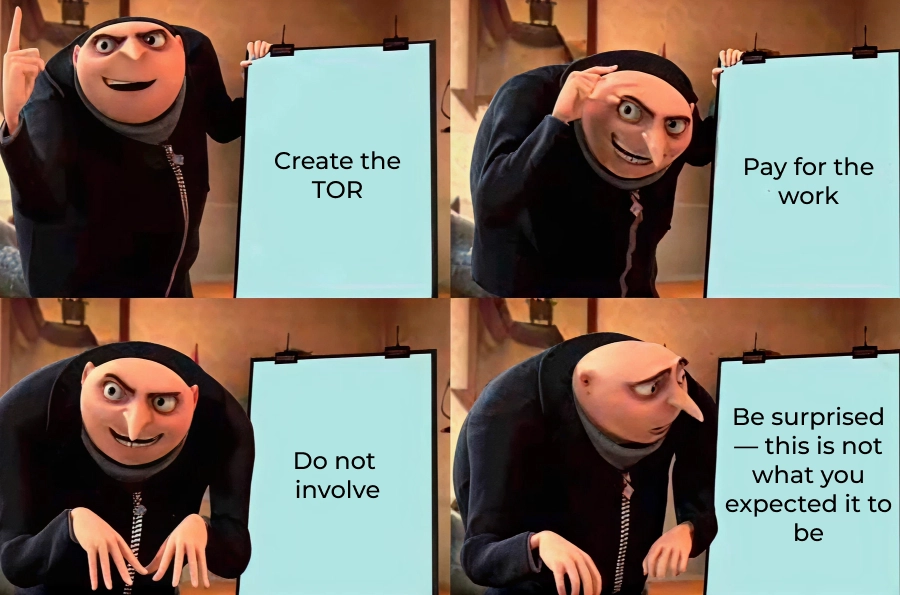
“I paid — now deliver.” This mindset never works. Money initiates the process, but it doesn’t guarantee success. No contractor, no matter how skilled, understands your product as well as you do. Only you know your users, market needs, constraints, and priorities.
When founders disengage, vendors make assumptions. Unfortunately, those assumptions can take your product in the wrong direction.
Even with a great spec, dozens of micro-decisions need to be made: What tradeoffs to accept? Which functions are mission-critical? Where is compromise acceptable?
How to avoid it:
Outsourcing hardware development can be a powerful tool, especially in the early stages, when speed and expertise matter most. But success depends on more than picking the right vendor. It hinges on how clearly you define expectations, how engaged you stay, and how well you manage the relationship.
In our experience, projects succeed when both sides communicate regularly, document decisions, and collaborate on key milestones. When they don’t, errors compound, and fixing them often costs more than building it right from the start.
At EnCata, we design our process to bring clarity from day one – across requirements, timing, IP, and collaboration. That’s what allows us to deliver successful outcomes, even in technically complex projects.
Fresh, cool, new insights from EnCata in engineering every month